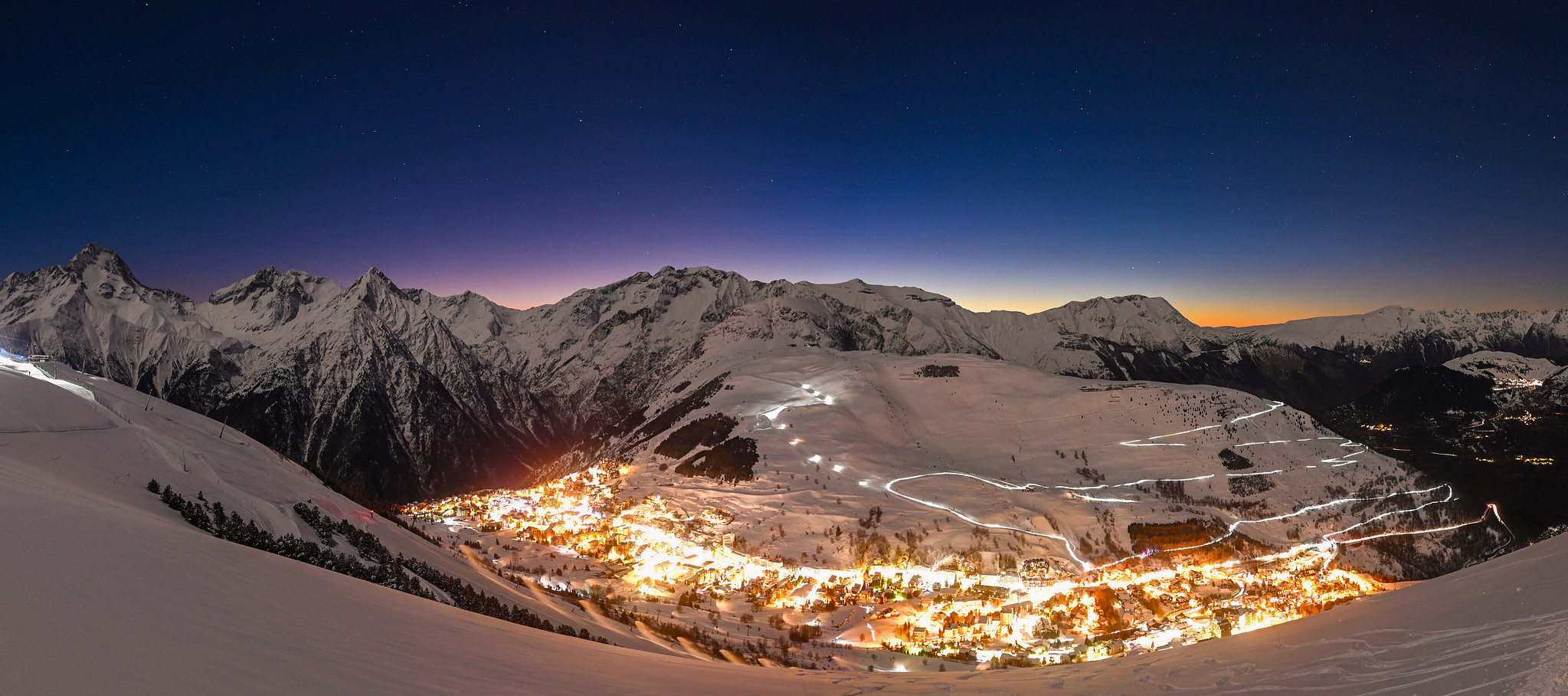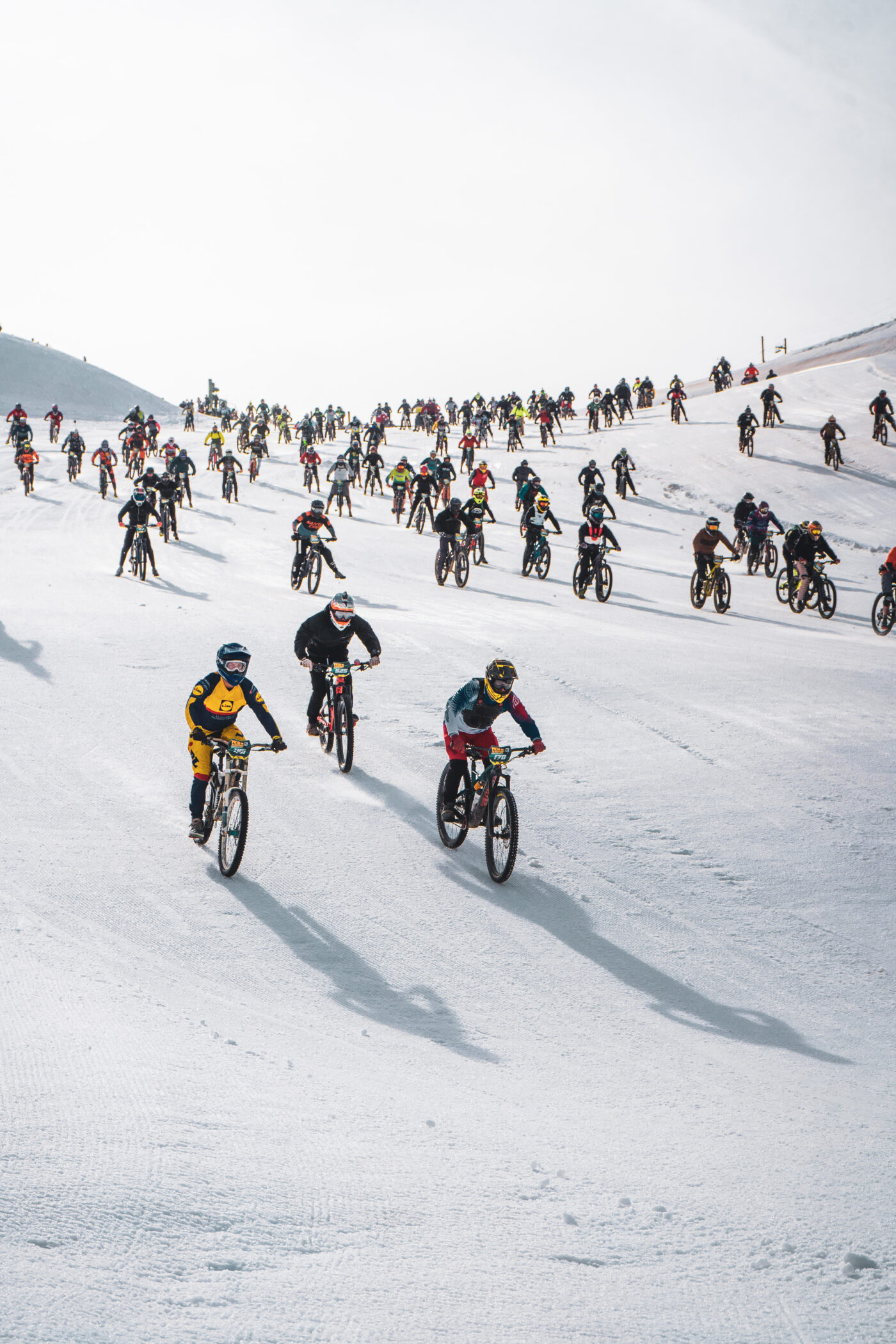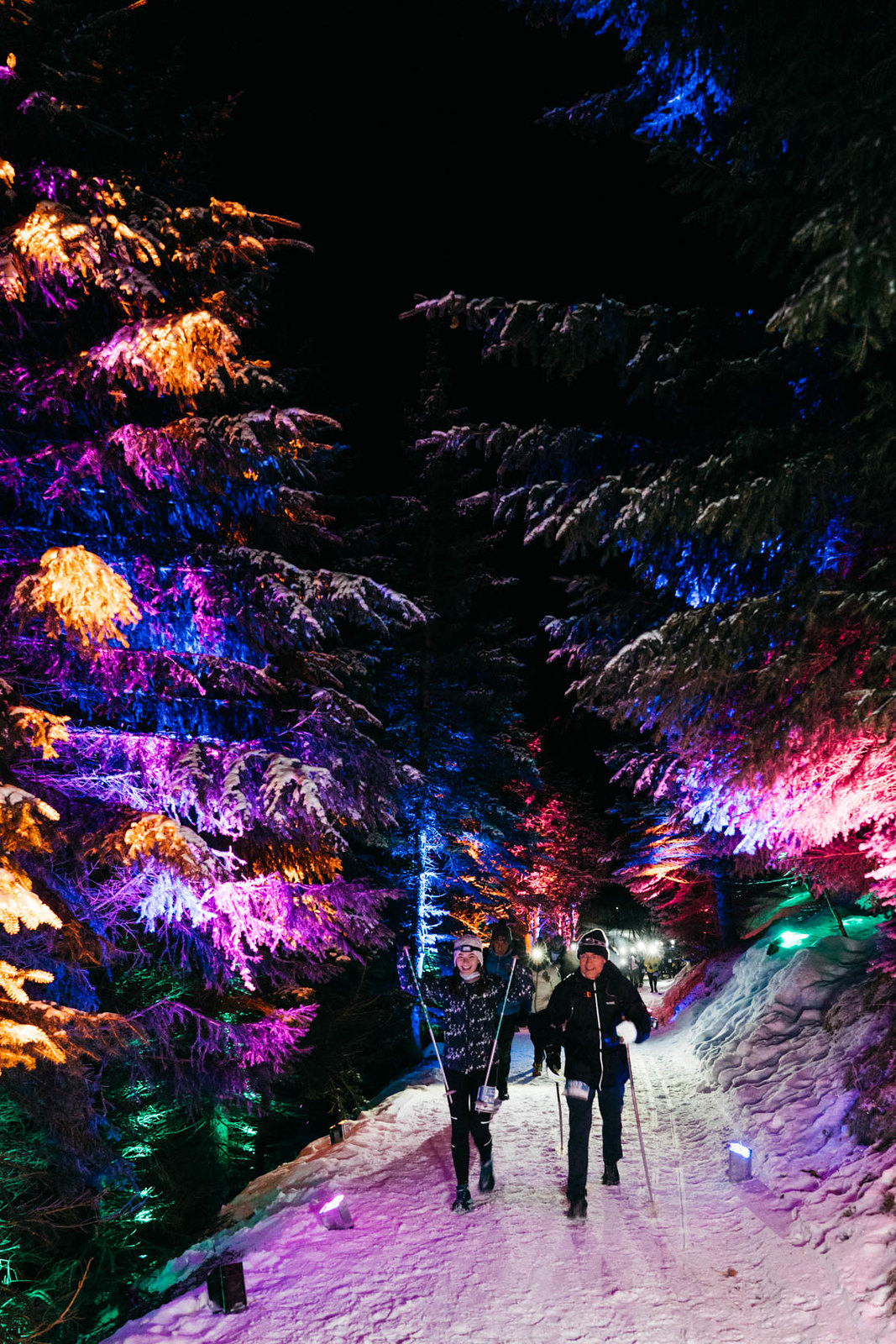An extreme (and very beautiful) winter trail running race in the French Alpes shows how event marketing can propel a destination to the summit. Sam Bradley reports
It’s a chilly -9 degrees Celsius. Night has fallen and I’m in a different country, trundling along a snowy and cold mountain track. The obvious question is why – and it’s one I’ve asked myself repeatedly over the past hour. The reason is twofold: on the one hand an impetuous decision made in a moment of foolish bravado, and the other a result of incredibly effective ‘event marketing’ from the local tourist office.
I’m in the small ski town of Les 2 Alpes in France, attempting to complete the Lumières de la Muzelle (lights of Muzelle) trail run. All of the routes (42km, 21km or 10km) are hard, comprising a rough track made tougher by strenuous hills (the 42km marathon route has an elevation gain of almost 1,500 metres).
Despite the obvious suffering this involves, what the figures don’t convey is the sheer beauty of the setting. The race began in the late afternoon with runners treated to a sky showing off a full palette of gorgeous sunset colours, magnificently complimented by pristine white snow blanketing all the surroundings. Darkness has now set in, but my headtorch is scarcely needed thanks to a clear and calm night sky dotted by countless stars.
Snow crunches underfoot with each step, while down below the lights in the village twinkle a glowing greeting. Not many people get to be out on a beautiful mountain at night, so (even though it may just be the happy running endorphins kicking in) I’m incredibly grateful to be experiencing this moment.
 Les 2 Alpes lit up under a starry night sky. The headtorches from the runners can be seen on the mountain trail to the right.
Les 2 Alpes lit up under a starry night sky. The headtorches from the runners can be seen on the mountain trail to the right.
The foolish bravado that led me to this moment is easily explained: I last ran a half marathon 14 years ago, and in a moment of madness decided to see if I still could. However, the main reason for my presence (the well run marketing campaign) probably deserves a fuller analysis.
Event marketing is a well-known concept, and helps explain why countries are willing to pay exorbitant sums of money to host attractions such as the Olympics and sporting world cups. The costs involved in those scenarios can be eye-watering (the 2014 Winter Olympics cost Sochi over US$50 billion to host) but the price tag is often justified as a worthwhile expense to attract the world’s attention.
For mini gatherings on a localised basis the numbers may be smaller, but the concept remains just as attractive. Event tourism comes in many formats, such as festivals, music concerts and sport meetings as well as business conferences which can range from anything such as cryptocurrency seminars to technology fairs.
Ironically, there are even conferences to discuss hosting conferences, for which the hosting rights are hotly contested. For tourism boards and destinations, figuring out how to get people to your location (to see your product first hand, and spend money on site) is always the crucial question to be answered.

One of the many reasons I’m so enamoured by this marathon is due to it’s perfect use of event marketing. To give a bit of context, the Les 2 Alpes ski resort has 2,000 residents, so the 1,300 runners who have journeyed here for the weekend will provide a welcome tourist boost in the form of hotel stays and restaurant visitors.
I must also confess this is not my first visit. The previous summer I watched the equally impressive “Mountain of Hell” bike race, an epic descent in which athletes bravely race from the glacier (starting at 3,400 metres) all the way down to the finish line at 900 metres.  The Mountain of Hell bike race.
The Mountain of Hell bike race.
Clearly Les2Alpes is doing something right. However, other destinations or tourist boards looking to emulate their success would do well to note some of the contributing factors. Firstly, the style of event is very well matched to the brand. Les2Alpes’ slogan is “Home of Ride” and it already has a long history and well-earned reputation for outdoor adrenaline activities such as skiing, paragliding and biking. Therefore this night race fits well into the existing product.
Another factor leading to the event’s success is that, even apart from this race, it has an inherently strong product. In these modern times of viral social media trends and short attention spans it can be tempting to overhype a destination with some clever Instagram shots or TikTok videos.
However ,that tactic won’t work for long unless the destination has the right fundamentals in place. For example, Les2Alpes is a beautiful ski town in a desirable part of the Alps. The town sits at 2,100 metres (the ski lifts reach up to 3,400 metres) so good skiing conditions are all but guaranteed, making it easier to entice people to visit.
It has an excellent supply of lovely accommodation options (Chalet Mounier in particular is lovely) and more than 80 restaurants, almost all of them worth sampling. Despite the somewhat remote location the transport links still work well. Having these facilities in place is important as it means a big event doesn’t cause a shortage of supply (and a resulting spike in prices).
The town has done well to ensure it’s provided a well-run and professional experience. The biggest challenge is that races (and festivals and concerts) by their nature attract a large crowd, all to the same place and at the same time. Making sure everyone still has a good experience is easier said than done – most people can readily recall a concert where the queues were too long, the traffic was terrible, there weren’t enough bathrooms, the food was awful/overpriced/unavailable.
This particular event must have been tough to organise, but it was flawlessly managed. Sending over 1,000 runners onto a mountain in the dark (in subzero temperatures) is fraught with potential disasters, but the route was well marked and there were plenty of safety stewards and paramedics marshalling the course. The organisers also provided a few extra surprises to turn it into a memorable occasion, such as great (and free) on-course photography as well as pretty lighting through one of the forest sections of the route.
 A memorable forest section of the route.
A memorable forest section of the route.
Another factor which is often overlooked is that an event needs to help a destination meet its objectives. Just getting people to visit a destination does not equal success. This is well demonstrated by a city like Venice which attracts many day visitors, but suffers from a low average spend per person. By contrast, this attraction is well suited to attracting the right visitors and for the right length of time.
A night race means runners (and their families) will stay in town for most probably two or three nights, benefitting the hotels and restaurants. Other destinations wanting to use events as a means to attract visitors will also do well to strategize on what type to offer, and what sort of traveller they will attract.
 Runners enjoying the last of the sunset.
Runners enjoying the last of the sunset.
Finally, Les 2 Alpes have leveraged the event very cleverly for maximum benefit. The race is held in January over a non-peak time of year, rather than over school holidays when demand is already high. They have also done well to build on its success as it’s now complemented by a summer race, the Le Defi de la Muzelle (the challenge of the Muzelle), a 100km or 50km test of endurance over five days through the picturesque Ecrins National Park. It’ll make a good excuse for my next visit.
 The nearby Ecrins National Park makes for a stunning location for the summer race.
The nearby Ecrins National Park makes for a stunning location for the summer race.
Race completed, and muscles partly recovered by a relaxing sauna session at the exquisite Chamois Lodge, and I’m ready to put these famed ski slopes to the test. I’m also trying out the new Panda Optics polarised ski goggles, and after a delightful day in the snow I’m pleased to report both pass with flying colours. Les 2 Alpes has over 200km of ski runs (spread over 80 pistes and connected by 40 lifts) so it needs at least a week to explore properly, but for now just a day playing around in the fresh alpine air is more than enough for my tired muscles.
The goggles handle everything that’s thrown their way (including a few crashes from yours truly) while their wide field of vision and comfortable fit are very beneficial. Enjoying the fresh powder and my Panda Optics goggles (Dual Vision in Blue with Hot Pink Toric Lens) overlooking Les 2 Alpes.
Enjoying the fresh powder and my Panda Optics goggles (Dual Vision in Blue with Hot Pink Toric Lens) overlooking Les 2 Alpes.
In conclusion it’s clear event tourism is not without challenges, and needs to be approached carefully and strategically. But as shown by Les 2 Alpes, when it’s done well the benefits are obvious, both for residents, visitors and tourist boards – and the end result is a joy to behold.
